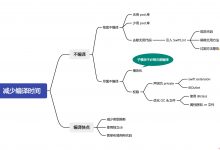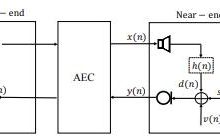【推荐阅读】微服务还能火多久?>>>
http://www.zdnet.com/article/did-jony-ive-jump-or-was-he-pushed/

Apple in the Enterprise: A Strategic Guide
Once a pariah in the enterprise, Apple has quietly emerged as a darling of executives and professionals because of the ease of use of the iPhone and the iPad. We look at how the influx of Apple devices is changing the tech landscape in business.
Read More
Quick: is Apple a consumer products company or a business machines company? Neither.
Apple is a platform company whose products are extensions of the platform: iCloud, iTunes, App Store, Genius Bars, etc. Product design is important, but is secondary to the entire Apple ecosystem for gaining and retaining customers.
That\’s why, for example, I don\’t care if someone has a better camera than my iPhone X, or a cheaper fitness tracker than my Apple Watch. It is the platform, and Apple\’s promise of privacy and easy to use services, that keeps me in the fold.
Which is why Apple hasn\’t needed Jony Ive for the last five years.
Form follows wha?
Form follow function is the modernist design credo. But too often, Jony flipped that on its head, making function follow form.
The most obvious flop was the trashcan Mac Pro. I defended it as a concept, but ultimately it put looks above function as the overheating graphics cards, and the inability to upgrade to more powerful processors, proved.
But Mr. Ive\’s relentless pursuit of thinner and lighter objects put him on a collision course with how people actually use Apple\’s products. The slightly thinner butterfly keyboard sacrificed reliability for style.
The Apple Watch 18-karat-gold \”Edition\” model was a passion project of Jony Ive. But why put products with a 5 year lifespan into gold cases? The most expensive Watch case is now ceramic, not gold, and costs a lot less than $10,000.
So we\’ve seen Apple reverse course on a number of Ive initiatives. iPhones have gotten thicker for better battery life. The butterfly keyboard is on the way out. The trashcan has been replaced with an extremely expandable design.
Esthetics are still important, but companies such as Samsung are also able to design beautiful and functional products. Design is no longer the differentiator it once was.
Industrial design is part art and part engineering. Sometimes Apple goes too hard on the art and loses track of the engineering. But what\’s more surprising is that senior execs forgot what Apple used to know about the pro market, or ignored for so long the greater battery life that customers were clamoring for.
Executive suite calculus
It\’s clear that Mr. Ive was on the way out for some years. I suspect that he was mostly occupied with making design choices for Apple\’s $5B spaceship HQ, rather than day-to-day industrial design, for most of the last five years. The decision to build new Pro machines marked a decisive rejection of his esthetic and design leadership.
But he was the face of Apple as a design-forward company, which probably made an amicable exit more important than most exec departures. Compare the rapid exit of Scott Forstall after the iOS 6/Maps fiasco to the much gentler exit of Mr. Ive.
The Storage Bits take
Jony Ive leaves Apple a very wealthy man, with a net worth estimated at $500M or more, and is probably the world\’s richest and most famous designer. He can do whatever he wants, and will likely have his pick of the best design jobs in the world.
But make no mistake. Mr. Ive was nudged out the door. Apple has changed. While design remains a vital part of the company\’s appeal, they\’ve moved to a higher level that competitors like Google, Samsung, and Microsoft can only dream of.
At that platform level the physical products take a back seat to the overall ecosystem. An obsessive focus on thinner, lighter, and more elegant products is no longer the decisive feature it once was.
Comments welcome, of course.
 爱站程序员基地
爱站程序员基地


